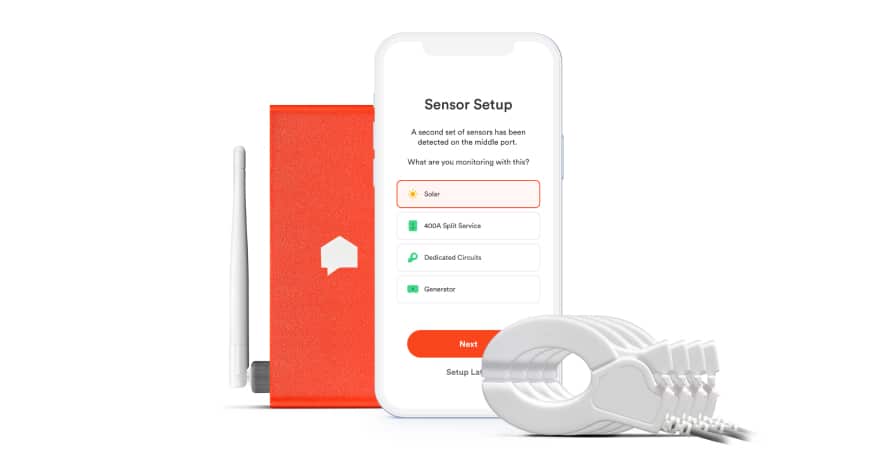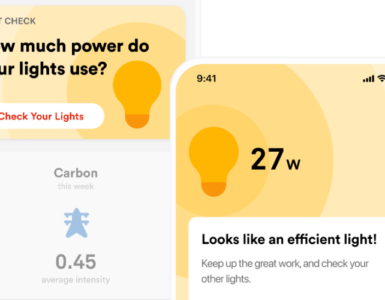What Can Other States Learn from Rhode Island’s Smart Meter Decision?
This fall, the Rhode Island Public Utilities Commission voted unanimously to approve Rhode Island Energy’s Advanced Metering Functionality (“AMF”) Business Case. In doing so, Rhode Island secured its position as a leader in smart meter deployments by establishing regulations that support flexibility while also maintaining accountability. For customers and electric utilities, this means having access to tools and resources to manage energy consumption in new and developing ways. And while Rhode Island might be the smallest state, it is among other leaders in the Northeast driving new opportunities in the clean energy future.
Rhode Island Energy’s business case filed under PPL ownership replaced a 2021 filing from National Grid, the then-owner of the Rhode Island utility. National Grid recently received approvals for similar smart meters, or Advanced Metering Infrastructure (“AMI”), deployments in its New York and Massachusetts service territories, and PPL’s filing leverages its own experience with smart meters in Pennsylvania and Kentucky. The U.S. Energy Information Administration expects the number of smart meters installed in the country to rise to 84% by the end of 2026, aligning to when Rhode Island Energy’s deployment is expected to be completed. So what makes Rhode Island’s deployment unique?
The technical specifications are advanced, even among the current generation.
Not all smart meters are created equal. The first generation of smart meters, also referred to as AMI 1.0, were deployed in various states starting around 2008 and were primarily data collection devices – sending 15-minute interval data to the utility hours later and processing all data offline. The new generation of smart meters, also being called AMI 2.0, are generally able to process high resolution energy data directly on the meter itself. With next-generation smart meters, software can play a unique role as intelligence at the edge of the grid.
AMI 2.0 enables the meter to become the distributed sensing, control, and computation platform at the edge of the grid, being labeled within the industry as “grid edge intelligence” or “distributed intelligence”. For example, applications like Sense use software running on the meter to process 50 million times more the data that was available in AMI 1.0. This higher resolution data enables real-time detailed views of energy use in homes and drives engaging consumer-facing experiences. Rhode Island will be among the first to deploy AMI 2.0 statewide.
But even within the AMI 2.0 category, there is a range. To fully support the use cases outlined by Rhode Island Energy, meters need continuous sampling of high-resolution energy data, significant local processing, and real-time networking – requirements that some meters being labeled as AMI 2.0 meet to varying degrees.
The Landis+Gyr Revelo meters selected by Rhode Island Energy are advanced among the AMI 2.0 market and can support both expected (electric vehicle detection, distribution automation, etc.) and new use cases as the needs of the clean energy transition evolve. This is especially important as the meters selected now will be on homes for the next 15-20 years.
Realizing benefits for customers quickly was at the forefront of the decision.
A key feature of the Rhode Island Commission’s decision in this docket is the balance of flexibility and urgency – flexibility in allowing the utility range in how it achieves certain benefits with urgency that it will achieve said benefits within defined timelines. Through this, the Commission is making sure that Rhode Island Energy is taking advantage of the advanced capabilities of these new meters and driving benefits for Rhode Island consumers.
Rhode Island Energy defined for its business case that “AMF refers to the functionality that comes from the broader deployment of hardware and software solutions needed to utilize the smart meter data in a timely and efficient manner.” While the utility industry has typically relied on hardware-based solutions to meet the needs of consumers and the grid, AMI 2.0 represents the opportunity to increasingly rely on software.
The advantages of this include both affordability and flexibility. Applications like Sense can be made available at no cost to consumers (vs. hundreds of dollars to install an energy monitoring system in a panel or thousands of dollars for a smart panel). This means even low- and moderate-income customers can benefit from real-time usage insights for easier home energy management, energy efficiency recommendations, and demand flexibility programs.
One outstanding feature of the Rhode Island Commission’s decision is that it directs certain capabilities to be activated in waves as meters are installed rather than waiting until all meters across the state are fully deployed. The utility is also required to activate Sense – mentioned by name – for customers as a means of providing real-time usage insights and load disaggregation. Customers having access to Sense’s real-time experience earlier will give them insights and programmatic opportunities sooner, leading to a realization of smart meter benefits right away.
With this action, Rhode Island is setting precedent – a recent draft decision in Connecticut’s proceeding on smart meter deployments includes a similar requirement that utilities activate certain capabilities on a rolling basis so customers realize benefits sooner. Applications like Sense will also serve to engage customers early in the clean energy transition so that the utility can increase adoption of new offerings as use cases evolve.
Stakeholders agreed that smart meters are foundational technology for the energy transition.
It’s not common in regulatory proceedings that all intervening parties agree on the utility’s premise for a filing – in this case, that advanced metering functionality is needed for Rhode Island electric customers. With this unique consensus that smart meters – in particular, those meters considered AMI 2.0 with advanced software capabilities – are standard for today’s energy system, Rhode Island stakeholders in this docket differed only in positions on timing, costs, and estimated benefits.
Perhaps driving this consensus is a common interest in achieving the clean energy goals of the state. Rhode Island established the Act on Climate in 2021, which requires the state to reach net-zero greenhouse gas emissions by 2050. As part of this, Rhode Island will see increased electrification of homes and vehicles, leading to higher demand on the grid. In addition, the electric grid will need to support smaller and localized resources from behind-the-meter renewable systems installed in homes and businesses.
By combining the sensing and computation capabilities of AMI 2.0 with control of devices in homes and buildings (through software interfaces), meters can help the grid to become more flexible and resilient in the face of changes that increase its complexity.
While these next generation meters were designed to run consumer applications like Sense, it is becoming clear that a lot of the value is at the intersection of consumer and grid benefits. The Commission’s decision on advanced metering is foundational to support these policy directives and enable utilities to engage consumers as a resource.







